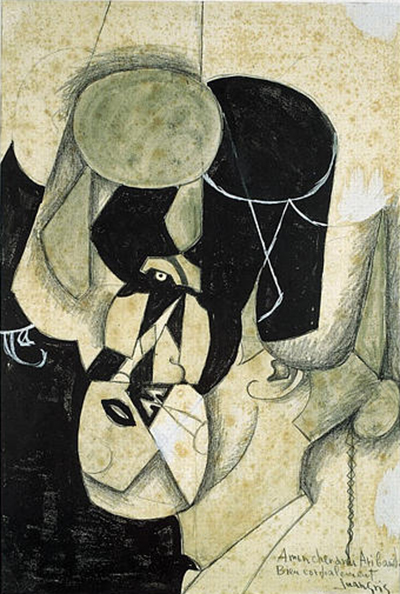Juan Gris produced a number of scenes based on the Spanish cultural activity of bull fighting and this piece features one of the most elaborate and memorable depictions of this topic.
This is certainly one of the more challenging cubist paintings from which to identify the various elements of the scene. One can quickly make out an eye and an ear which allows us to accept that this is clearly a portrait. We can then see some hair, perhaps in a bun, and also some clothing at the bottom of the canvas, which is a collared shirt with perhaps a tie. Then we can see the mouth, but the rest of the elements are harder to be sure about. Regular fans of Juan Gris' paintings may be able to discover more by comparing this painting to others from around this time. Failing that, you might also check out some of the other members of the cubist movement as much of their work overlapped during this period.
You will find small areas of white gouache which were probably corrections made by the artist and are found in much of his work. It seemed entirely acceptable to him to leave these parts as they were, with errors partially hidden by this white coverage. The artist leaves a written note in the bottom right of the artwork alongside his signature. This was unusual as normally he would just sign his paintings, suggesting that this was to be given as a gift to a friend, family member of perhaps a contact in the art world.
Bullfighter is owned by the Musée d'Art Moderne de Céret in France and dates the piece at 1913. The use the original title of Torero and suggest that the artwork was completed from black crayon and gouache. Their own website is only available in French, so native speakers would be able to find out more about their collection of this artist's work online. Harlequin from 1922 and Dancers from 1924 are also part of their collection. Their overall offering features a number of other notable artists including André Masson, Henri Matisse, Joan Miró, Pablo Picasso, Edouard Pignon, Chaim Soutine and Leopold Survage. This museum may be less famous than some of the internationally-renowned institutions across France, but there is still an impressive selection of highlights to enjoy for those visiting.




